
Ricotta Ravioli with Chinese Characteristics
Let’s start with the ricotta.
Estimated prep time: However long it takes you to juice a lemon, pour 4 cups of milk into a saucepan and heat it a bit, pour in the lemon juice, wait 5 minutes, pour the lemony milk into strainer and then wait 1-2 hours for it to drain. So let’s say a total of 2 hours and ten minutes, with about 15 minutes being active. The rest is low-key coffee drinking time.
In Shanghai, it is actually possible to buy cheese. Not everywhere, mind you, and with very variable options. In most shops in non-laowai neighbourhoods, you’ll generally just find the Chinese equivalent of Kraft Singles. At City Shop, a Hong Kong based grocery chain where the foreigners push their trolleys down aisles full of expensive, imported non-melamine dairy products, German muesli, Mexican salsa and French chocolate, a tiny, tiny 150g pot of dubious ricotta (when in stock, which it wasn’t) costs about 50 rmb (about US$8), which is totally absurd. So I decided to make my own.
I’d made paneer before, quite successfully (see here and here), so I thought I ought to venture into the realm of the Other Fresh Cheese. Ricotta is basically just paneer before it gets squashed by a cast iron saucepan in the sink. However, to be on the safe side, I enlisted an actual ricotta recipe rather than halting my old paneer recipe mid way. I went for Smitten Kitchen because her pictures are really pretty. I’ve never actually tried her recipes before but I’m quite certain they are excellent because, as noted earlier, her pictures sure look pretty. And no, I’m not superficial.
Here is her recipe:
- 3 cups whole milk
- 1 cup heavy cream
- 1/2 teaspoon coarse sea salt
- 3 tablespoons freshly squeezed lemon juice
And this is what I have:
- 1 litre tetra pak of long-life milk from corner shop
- Table salt, clumped from humidity
- A few dubiously bright lemons (possibly dyed yellow)
Which is pretty good compared to my usual list of available ingredients when it comes to making something from a non-Chinese recipe.
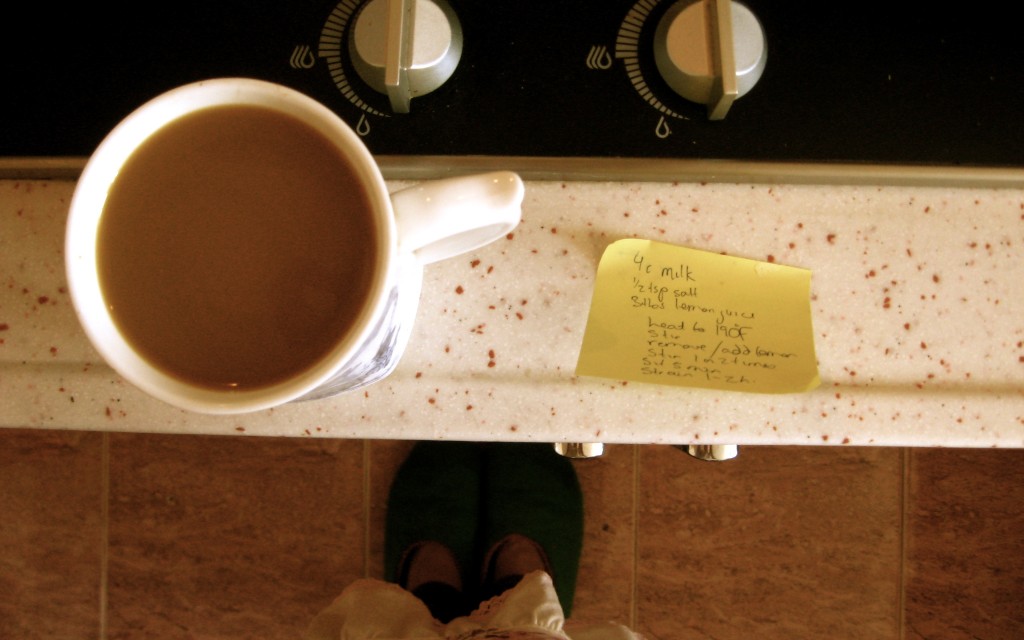
First, I started with a nice cup of strong coffee, using a leftover splash of the one litre box of long-life whole milk that I’d already measured out and poured into a biggish saucepan, along with a few thudding shakes of clumpy, humid salt. The four cups of dairy called for in the recipe take just under a box of milk. Judging by the after-weight, I’d say there’s still about 1/4 cup of milk left for further coffees.
I had considered heating the milk in the wok for the sake of regional authenticity but I’ve managed to get it to such a wonderfully non-stick state of seasoning from years of sauteeing garlic, onions and chilis that I feared the lactic acid would set me back to square one with it. That and the cheese would probably be infused with ghostly undercurrents of the aforementioned garlic, onions and chilis.
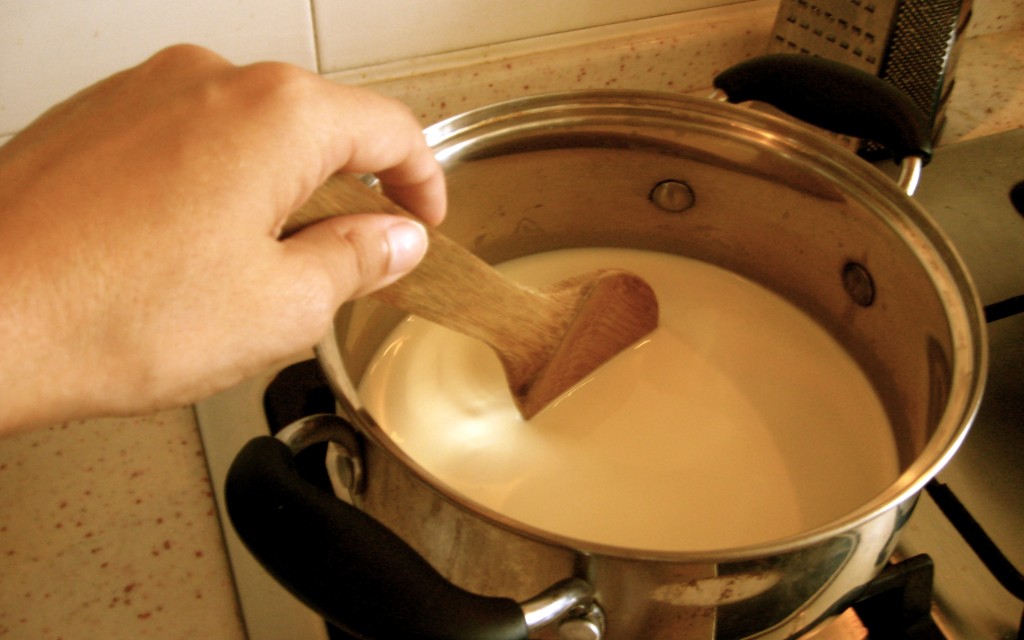
So the milk and clumpy table salt went into the pot we usually use for boiling pasta. I heated it on the lowest possible flame, stirring gently to make sure the milky sugars didn’t stick. Just before it starts simmering, when the surface is starting to move ever so slightly and there’s milk steam coming up, at a point where you can still put your (clean!) fingertip into the milk without screaming, turn off the flame and dump in the lemon juice. If you actually have a thermometer, it should hit just 190F. Give it a few gentle stirs then let it sit and curdle quietly for 5 minutes.
This would be a good time to start making another pot of coffee.
After 5 minutes, dump it into a colander lined with cheese cloth. If you can’t find cheese cloth, try to track down some Yunnan shepherds or use a loosely woven cotton scarf or some clean, thin fabric. The curds need to be able to drain through the cloth, but not too freely. If you’re an ambitious food nerd like me, drain the whey into a sauce pan and save it for later. Otherwise, draining it into the sink is fine. Ms Smitten Kitchen suggests draining the curds for 1-2 hours so I settled on an hour and a half. They turned out lovely and smooth and creamy and ever so slightly lemony.
[Edited to Add, 5 September: I just got word from the brave and bold Wendy down the road that you can use (seriously) the cloth bags that CheersIn gives out to carry your beer home. Who knew?]
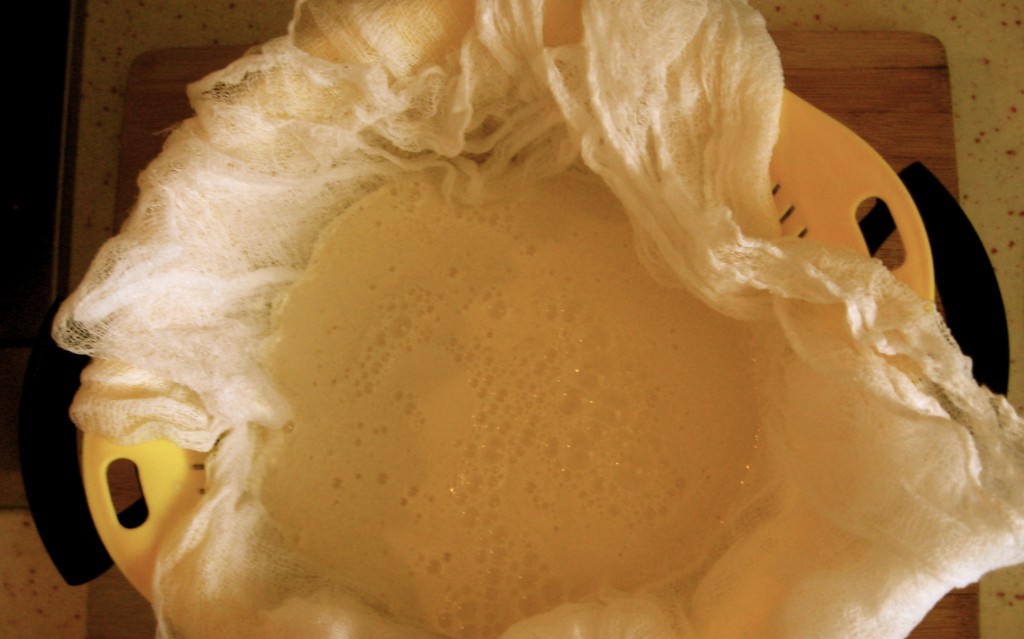
When it’s ready, put it in an airtight container in the fridge until you’re ready to use it.
Before shoving it in the fridge, I added a pinch more salt, a few (um, 12?) grinds of black pepper and 3 very thoroughly crushed and minced cloves of garlic. I also added a few rubbed branches of thyme leaves after it had been in the fridge for an hour or so. It was insanely good just on its own like that. We very nearly didn’t have any left for the ravioli. Luckily, I stopped myself from eating it all out of the container.
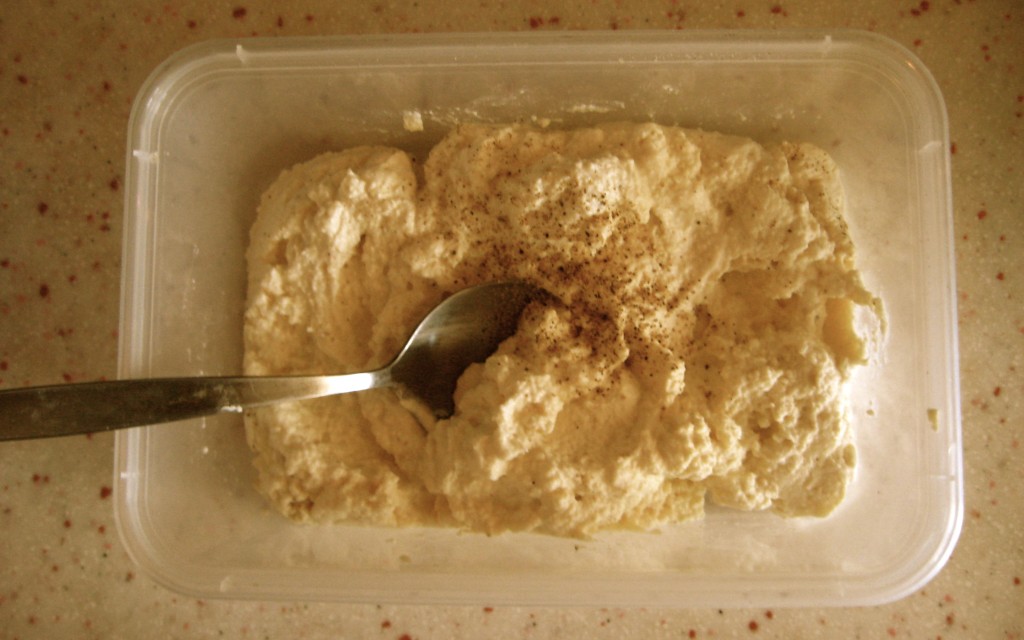
Note: Chinese lemons seem to have an absurd amount of seeds. If you don’t have one of those juicing gizmos and have to do it by hand, make sure you don’t let the dozens of pips slip through your fingers. They’re harder to pick out of the measuring cup than they are to filter in the first place. One lemon makes just slightly more than 3 table spoons. I ended up just dumping all the juice in.
And now to make the filling!
Prep time: Um, 2 minutes? If that? 3 if you’re reallllly slow?
Normally, I’d just throw things together in a bowl and hope for the best- and that usually works- but today because I’m taking pictures of the process and noting it for all to attempt to replicate, well, I figured I ought to have a recipe or something. For consistency. So I went to the BBC Food website, which happened to be first in my Google search for Ricotta and Herb Ravioli. I trust the algorithms to know good cooking.
- 75g/2¾oz pine nuts
- 450g/1lb ricotta
- 75g/2¾oz finely grated parmesan, plus extra to serve
- 3 tbsp finely chopped fresh marjoram leaves
- 1 tbsp finely chopped fresh mint leaves
- 2 tbsp finely chopped fresh basil leaves
- ½ unwaxed lemon, zest only, finely grated salt and freshly ground black pepper
What I actually have after going shopping yesterday:
- An unknown but small quantity of pine nuts (no scale for weighing)
- The home made ricotta- is it 450g? Don’t know. 450g at City Shop would easily cost 150rmb (US$23ish)
- Kraft parmesan!
- Um, a small bottle of ‘Mixed Italian’ herbs
- A small bag of fresh thyme (they also had fresh Thai basil but I wasn’t sure it would be appropriate)
- Cilantro
- A bunch of very bright, very shiny lemons with dubious zesting ability
- Salt and pepper (Cambodian Kampot pepper, to boot! We bought a kilo bag when we were there!)
I’m not going to use the pine nuts as I don’t like crunchy things in my ravioli. You can use them if you want, of course.
As I mentioned above, when my ricotta was ready, I added salt, pepper, crushed garlic and thyme and let it all meld in the fridge while we went out for lunch.
When the dough is ready and rolled out, a few spoonfuls of parmesan can be thrown in, and a few finely chopped lengths of cilantro added. If you have other fresh herbs, go for it. I wish we had them.
And now for the dough (D’oh!)!
Prep time: It depends on how comfortable you feel around dough. I can get the flour and eggs mixed in about two minutes and then I knead for 5-7 minutes. I let the kneaded dough rest in the fridge until I need it. Make it the day before and it’ll be fine. I’ve used 3 day old refrigerated dough. Make a double batch and you can have fresh pasta for three days straight. The rolling out can take about 5 minutes if you have to use a thermos rather than, say, a rolling pin or pasta maker. Cutting out circles and filling them took me about 5 minutes because I accidentally over-filled them and made a bit of a goopy mess. You boil them for about 3 minutes, drain, eat.
I make my own pasta. Yes, I’m one of those people. I even smuggled a thrift shop hand cranked Italian pasta maker back to China so I could make a decent linguini at home. At one point, I think I used an actual recipe for the dough but now I do it based on the consistency of the dough as I mix it.
This is my approximate recipe
- 2 or 3 or 4 cups of flour, depending on whether you want enough for one meal or two (for 2 people)
- 3 or 4 or 5 eggs, depending on how the dough feels
- Maybe a blorp of water or oil, if dough is too dry when mixing
This is why I don’t write cookbooks.
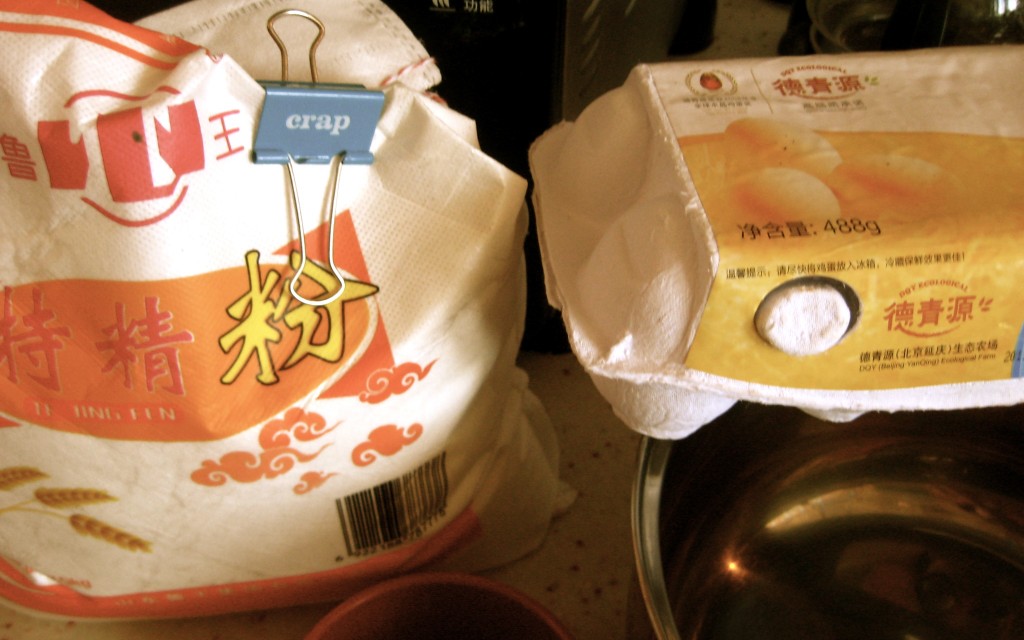
Today, I used 2 heaping cups of flour (basically just shy of 3 regular ones) and 4 eggs because I was in the mood for rich egg noodles. I ended up having to add a bit more flour when kneading as it was just a bit too sticky at first.
Scoop the flour into a bowl– or a clean, dry sauce pan if you’re like me and don’t own any bowls bigger than a cereal bowl– and make an indentation in the center. Crack the eggs into the well. Mix with a wooden spoon or a really strong fork or a spatula until the egg and flour can be formed into a doughy ball. Add a little water or oil or another egg if it’s too dry and crumbly and refusing to make a ball.
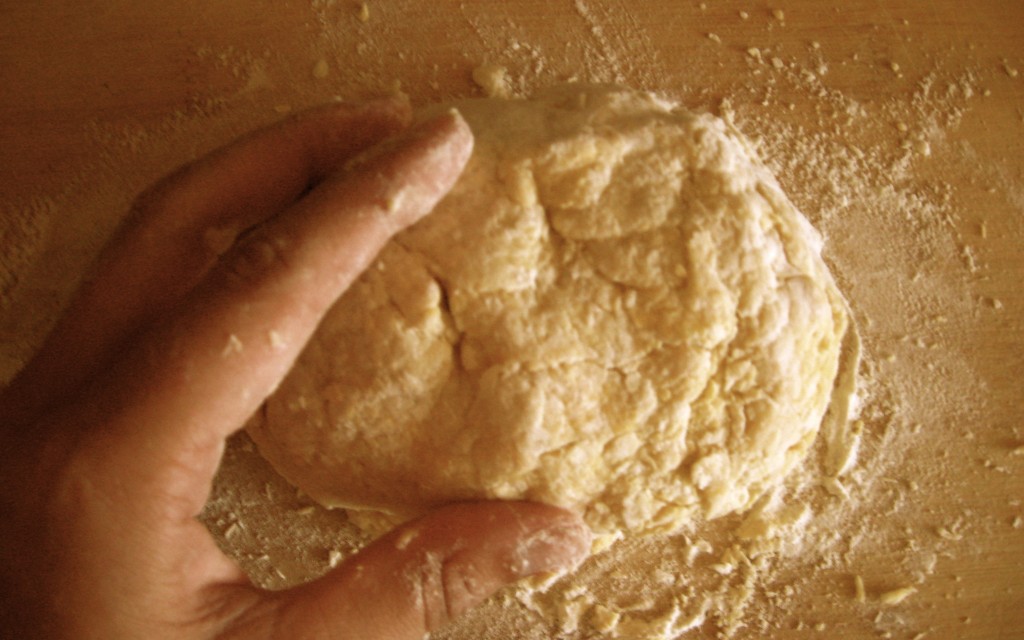
Dump it out onto a floured cutting board. Or onto a clean, dry counter dusted with flour. It’s your call. You’ll be kneading the dough with some vigor so a cutting board can be irritatingly unstable if it isn’t jammed up against, say, a wall or something. Knead until the ball of dough is smooth, springy to the touch, all the flour and egg have been worked in and it feels just like a baby’s bottom (providing you know what that feels like). Try not to get flour everywhere, as I tend to do. I had to rinse bits of floury stray dough off my coffee pot. Not cool.
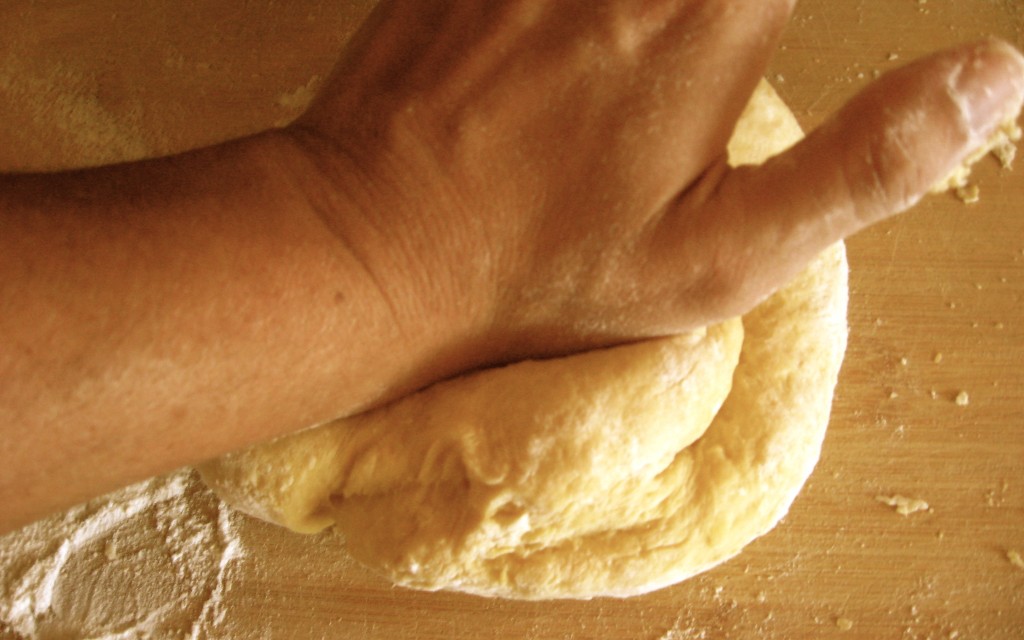
If you don’t know how to knead or if you find my instructions infuriatingly vague, go here.
After you’ve achieved the consistency of a baby bottom, wrap the dough ball in a clean cloth, put it in a plastic bag and let it rest in the fridge. You can make it the day before if you want. Just let it get back to room temperature before you try to work with it.
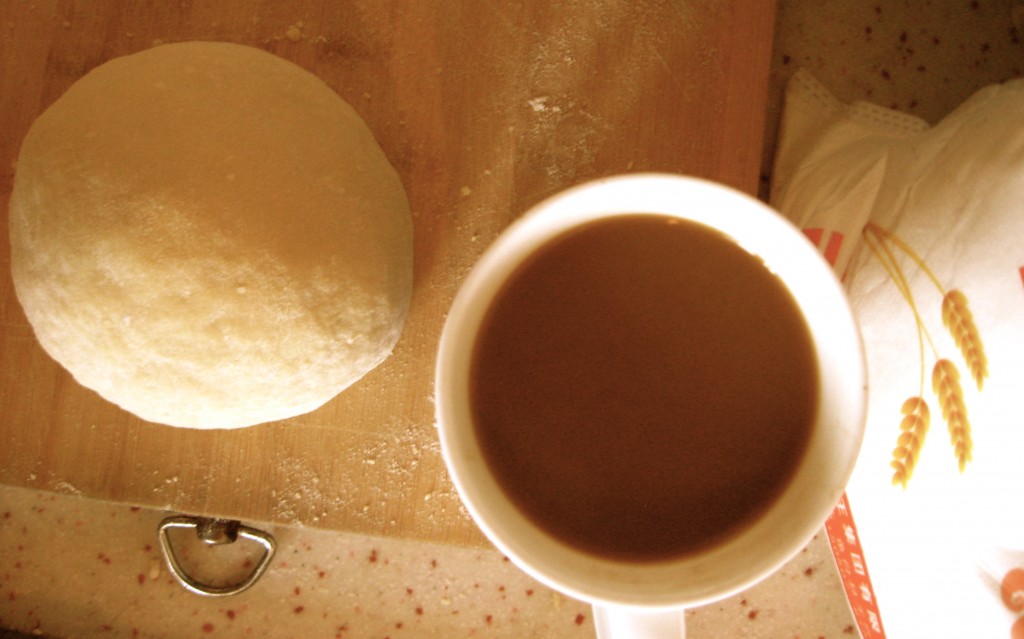
Now, when you’re ready to make your ravioli, slice off a chunk of dough about the size of your fist and get ready to roll it out. If you are lucky, you might have access to a pasta maker or a rolling pin or a leftover bottle of wine. If not, improvise. I actually have all three of the above but for your sake, I used my old teddy bear thermos and it worked just fine.
I can’t tell you how many this makes because… I don’t know. I ended up only using half the dough I made (will use it tomorrow with the marinara sauce we also made today to go with the ravioli). I also accidentally made the first six ravioli waaaaay too big, with waaaay too much cheese inside. Not that this is a bad thing but, um, I kind of used up all the ricotta with only 6 big ravioli and 4 smaller ones.
Too big: using pasta jar lid as dough cutter
Just right: using espresso cup rim as dough cutter
Now I know.
To cook, bring a pot of water to a boil (I used our wok as the sauce pans were in use), plop in ravioli one at a time, careful not to burst them. Nudge them a bit at first so they don’t stick to the bottom. I used a big slotted spoon to put them in and take them out. I did a test run on one of the big ones and it was lovely after 3 minutes of boiling.
Enjoy.
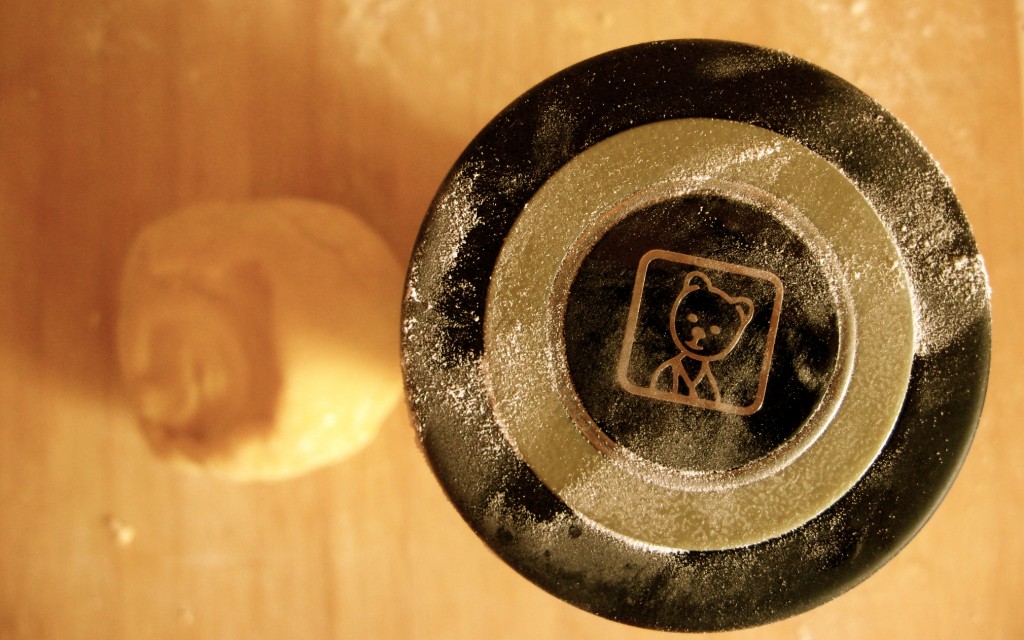
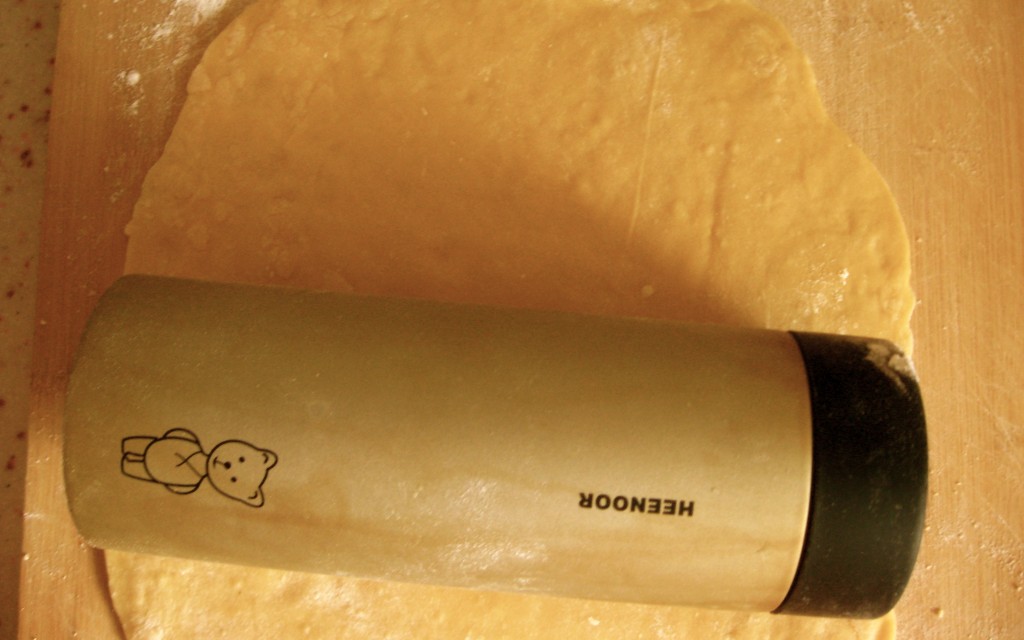
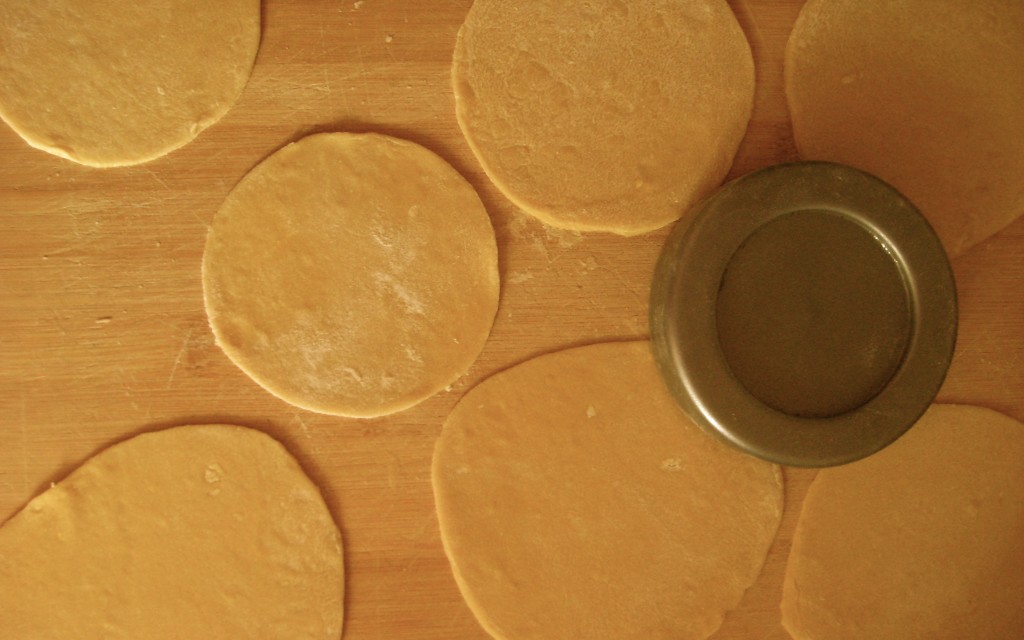
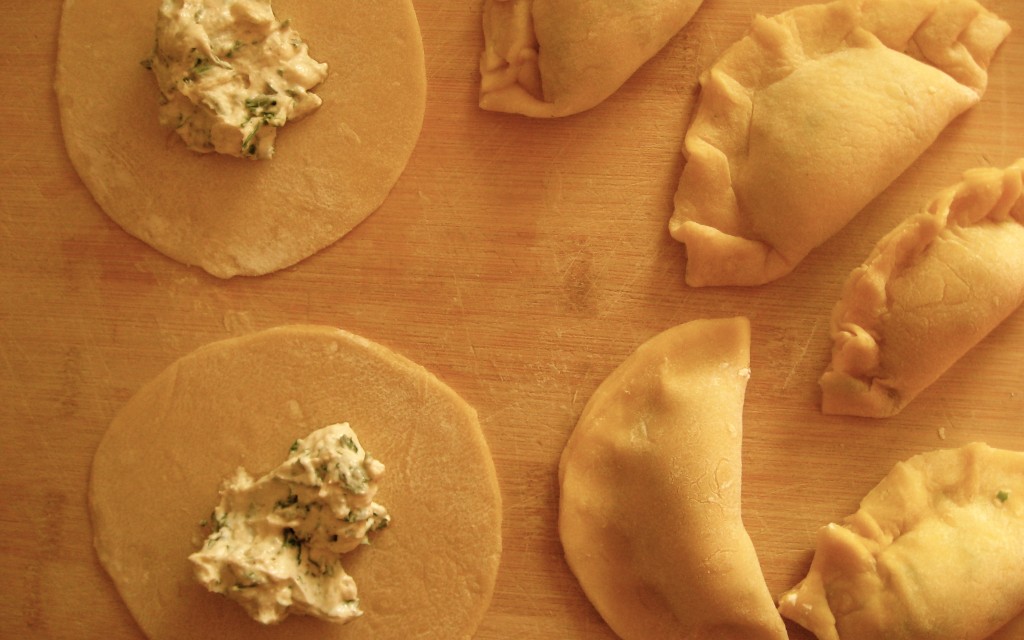
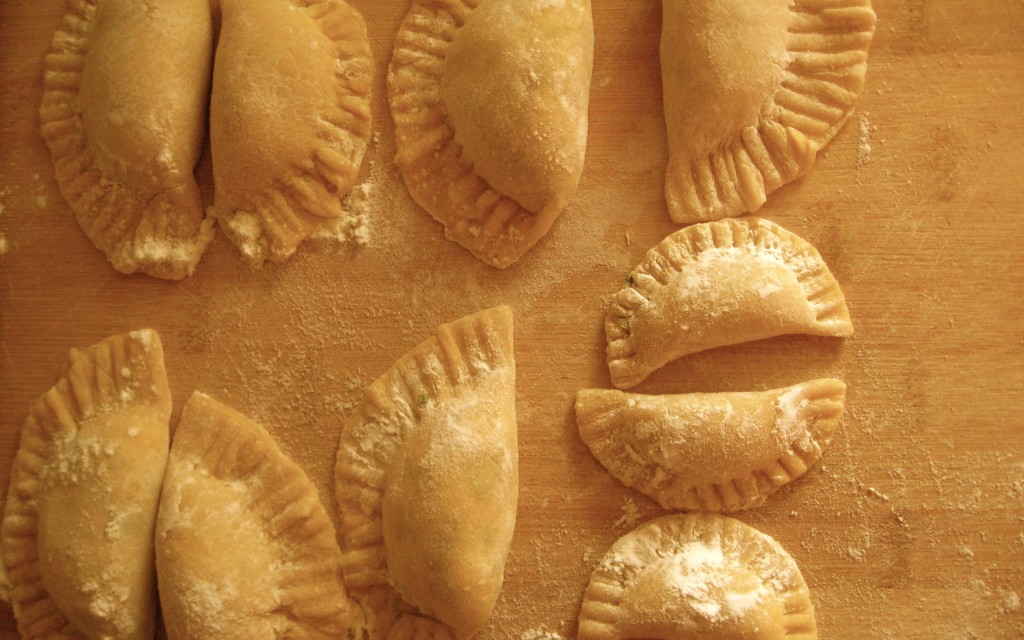
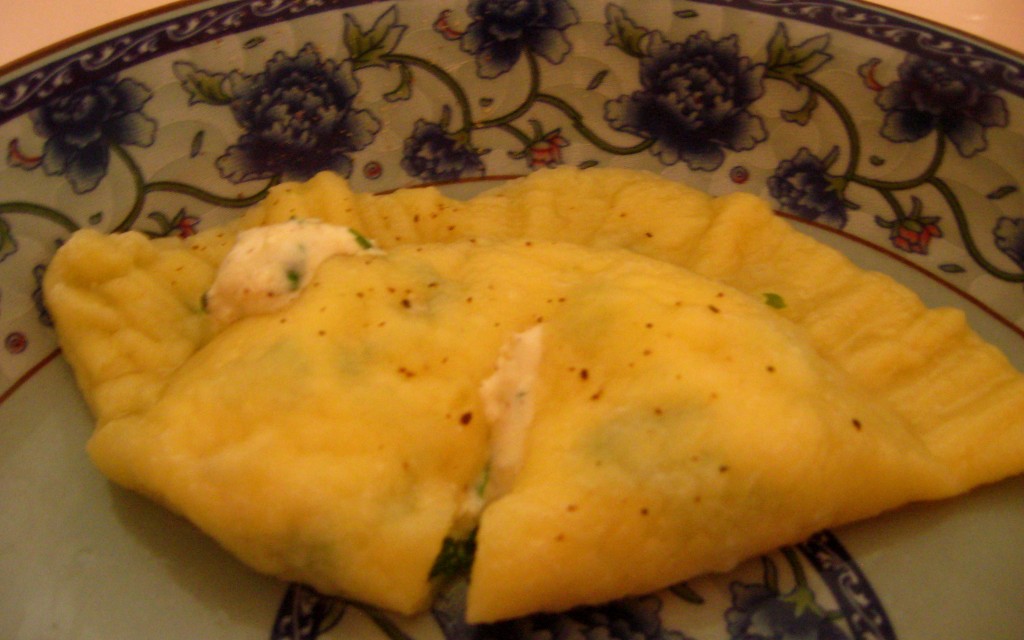
You May Also Like

Lavash crackers qui rit (and crockpot hummus)
May 21, 2012
Making Lovely Lazy Bread for the Zombie Apocalypse
November 10, 2013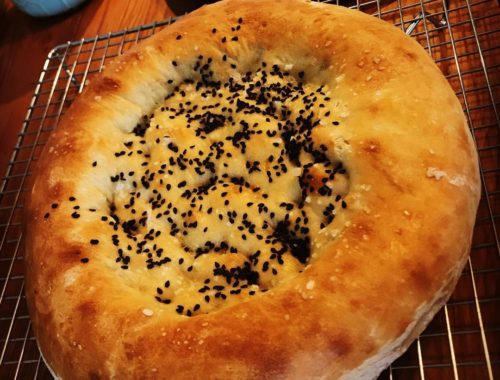
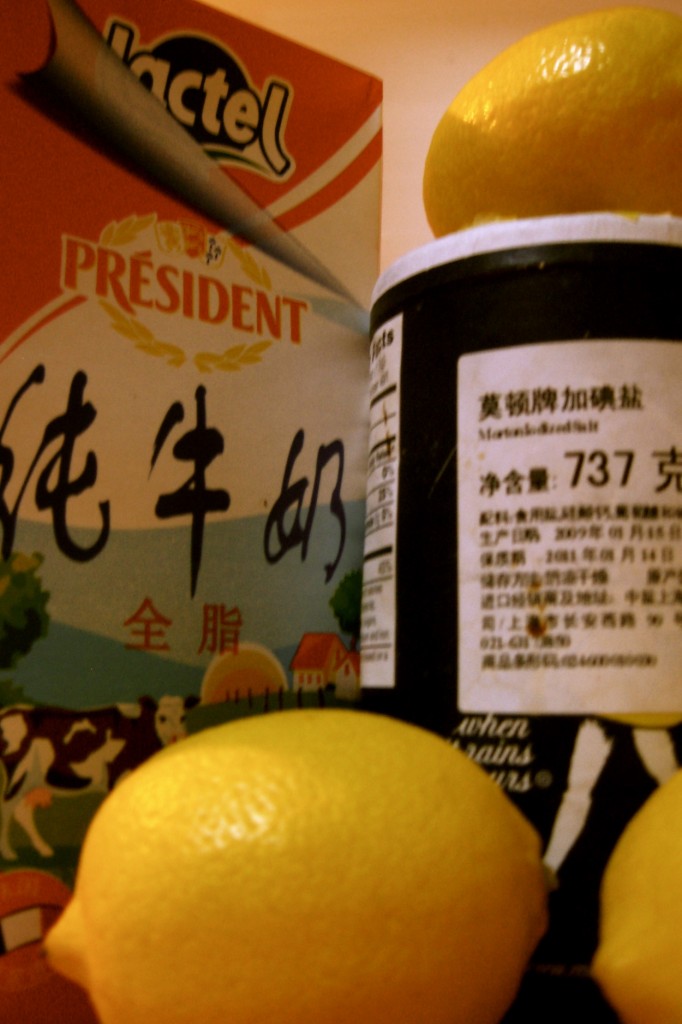
8 Comments
Erin
Impressive! I love this idea for a blog and this recipe sounds delicious. We’ve only been in Asia (Japan) for a few weeks but have already been unable to resist buying overpriced tiny blocks of cheddar from the supermarket.
MaryAnne
Thanks! Hopefully I will be able to figure out how to make a lot of things with some improvisation… Any requests? What’s your kitchen set up? Do you have a toaster oven? Wok or tava?
Rachel
So, we did this tonight for friends because of your encouragement and as per your instructions. It was very good. I put garlic, salt and fresh basil in the ricotta, tons of fresh herbs in the tomato sauce, and made the ravioli with spelt. I might use sifted spelt next time as the whole spelt was a bit dense. And I might start the whole process the day before. Not that it wasn’t fun making ravioli with friends but it meant we ate later than planned. All in all it was lovely. Thanks for the inspiration.
MaryAnne
Yay! Glad it (mostly) worked! I’ve also done the dough with 25% fine buckwheat flour, which worked out very nicely. Needs a bit more kneading than regular all-purpose flour but had a lovely deeper flavour.
Rachel
It was actually very interesting to re-westernize your recipes. Keep ’em coming. Miss you.
Tina
I’ve made the ricotta myself, but use the dumpling wrappers from the wet market.Not sure I would go to that much trouble. I’ve also used the dumpling wrappers for pierogies. Nice blog!
MaryAnne
Thanks! I’ve used the dumpling wrappers myself in the past but was curious to see if I could make them from scratch. I’m a big fan of home made pasta and the ravioli skin texture was lovely. A lot of work though! Am planning to do pierogies soon- may try them with dumpling wrappers this time!
Tracyann0312
I never taste Ravioli after I stopped studying. This food taste delicious especially if you add up more cheese inside! Hope I could visit your house to eat dinner with your family!
Tracyann0312 recently posted..חינוך